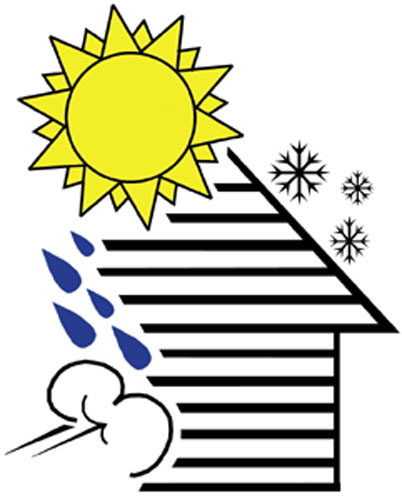You may not be quite ready to dust the cobwebs off your winter coats and sweaters, but it’s not too early to begin thinking about getting your home ready for “old man winter.” Making your home more energy-efficient through weatherization efforts can save 5 to 30 percent on your energy bill. According to the U.S. Department of Energy, you should start your winter weatherization with an energy audit. An audit helps determine how much energy your home uses, where your home is losing energy, and what repairs to prioritize to make your house more efficient.
Here are some tips to do just that:
Caulk the cracks
Find and seal air leaks. It’s best to use caulk, which is a flexible material that prevents air leaks through cracks, gaps or joints. You should always start with the biggest leaks first and work your way down to smaller ones. In addition to sealing air leaks, caulking also helps prevent water damage inside and outside when applied around faucets, ceiling fixtures, water pipes and other plumbing fixtures.
Add insulation
If possible, add insulation to lower heating costs. To maximize energy efficiency, your home should be properly insulated from the roof to the foundation. Pay special attention to open spaces such as unfinished attics, garages, floor joints and storage areas.
Seal outdoor water lines
If you have an air conditioner or outdoor water lines, these should be drained and properly sealed before winter. Be sure to protect pipes that run through unheated areas like crawl spaces, basements or garages. Any exposed pipes should be covered. Outside faucets need special attention: Turn each faucet’s water supply off at an inside shutoff valve. Disconnect outdoor hoses and repair any leaking pipes.
Lower temperatures
Turn down the temperature on your water heater, since most come pre-set at 140 degrees. Consider setting your thermostat back 10 or 20 degrees. This will result in savings of more than 15 percent and you may not even notice the temperature is lower. Installing a programmable thermostat will help you manage the temperatures throughout your home.
Lighten up
An average household spends about 5 percent of its energy budget on lighting. To cut these costs, use energy-efficient light bulbs like a compact fluorescent lamp (CFL) or light-emitting diode (LED)—since they last 10 times longer and use 75 percent less energy. Energy-saving lightbulbs such as CFLs, and LEDs could save you as much as $50 per year when you replace 15 traditional incandescent bulbs in your home.
Here are a few other tips to help keep your home and wallet “insulated” this winter:
- Keep the doors to unused spaces, such as guest rooms, closed.
- Turn off heaters in unused rooms and close the vents.
- Keep windows and doors closed as much as possible.
- Leave shades open during the day and down at night.
- Close the dampers on fireplaces when not used.

